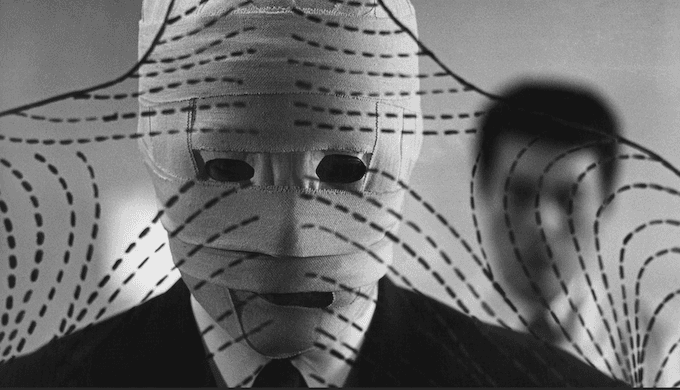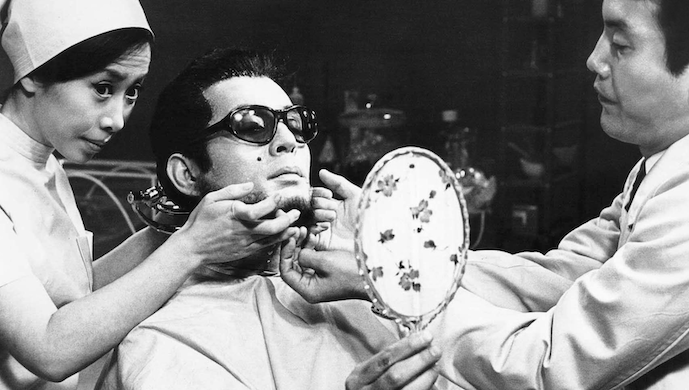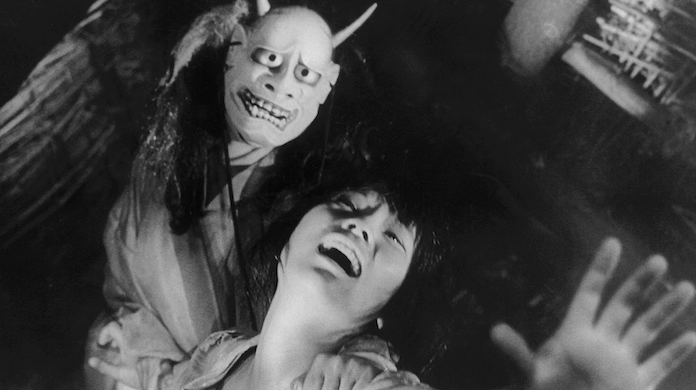Don’t Go Looking for Jump Scares, as Japanese Horror Films Run Quite a Bit Deeper
Film Forum is mounting a series featuring some two-dozen films that prove there’s more to Japanese horror films than men in rubber monster suits destroying downtown Tokyo.

‘Japanese Horror’
Film Forum
March 1-14
“The Face of Another,” a 1966 picture by the Japanese filmmaker Hiroshi Teshigahara, beggars casual description, being a jerry-rigged melange of popular antecedents, existential pontifications, and political underpinnings. The screenplay was adapted by the novelist Kobo Abe from his book of the same name. Teshigahara and Abe had collaborated before, most notably on “Woman of the Dunes” (1965), an arthouse mainstay that earned Teshigahara an Oscar nomination for Best Director.
He lost to Robert Wise, who helmed “The Sound of Music.” Could there be an entertainment more different in tone and temper than either of the Teshigahara films? American audiences and critics didn’t connect with “The Face of Another,” though it was a sizable hit in Japan. The film’s thematic drift toward fatigue, demoralization, and self-doubt likely resonated with audiences for whom the aftermath of World War II was, if not necessarily fresh, then resonant.
One doesn’t have to go out too far on a metaphorical limb to find a linkage between the film’s emphasis on bodily damage and the bombings of Nagasaki and Hiroshima. Then there are the oddments of Germanic culture weaving their way through the proceedings, from a soundtrack that features Tōru Takemitsu’s take on a Viennese waltz to scenes that take place in a beer hall named München. Teutonic heraldry of a vaguely militaristic sort is present and repeatedly underscored.
“The Face of Another” is one of some two-dozen films featured in “Japanese Horror,” a series mounted by Film Forum. How frightening is Teshigahara’s movie? There’s not much in the way of jump scares — the contemporary litmus test of the genre — but a whole lot that is discomfiting. Wheedling their way through the film are influences as diverse as “The Cabinet of Dr. Caligari” (1920), “The Invisible Man” (1931), “Mad Love” (1935), and, especially, George Franju’s haunting “Eyes Without A Face” (1960).

Our protagonist, Mr. Okuyama (Tatsuya Nakadai), has recently suffered an industrial accident that has left his face mutilated. Wearing an encompassing bandage around his head, he’s become bitter, dismissive, and caustic — not least because his wife (Machiko Kyō) does her best to avoid him. Okuyama’s psychiatrist (an impenetrable Mikijirō Hira) has been experimenting with a procedure in which a synthetic substance can be molded into an approximation of human flesh. There’s no time like the present to put it into effect.
Once the surgery is complete, Okuyama acquires a different face and, with that, takes on some curious ideas. Among the most unsettling is a proposed attempt to seduce his wife under these new circumstances. Concurrent with the main narrative is a story of disfigurement, loneliness, and lust in which a young, beautiful, and flagrantly scarred woman (Eiko Muramatsu) attempts to navigate a befuddling and often hostile world. All the while Teshigahara shuffles the deck with a bevy of cinematic flourishes that only go to amplify the film’s weird digressions.
Place “The Face of Another” alongside the original “Godzilla” (1954) as one country’s response to the disasters of war. Other films on the docket reach further back in time, at times hundreds of years.
The most compelling of the bunch are “Ugetsu” (1953), “Onibaba” (1964), and “Kuroneko” (1968), all of which are medieval in their settings, drenched in atmosphere, and powered by folklore. “Onibaba” is a barebones masterpiece about womanly comradeship that can alternately be read as a feminist parable or metaphysical fairy tale. Again, it’s not a scary movie per se, but it does trade in a silky brand of supernatural unease.

Director Kaneto Shindo’s script is typical of Japanese horror films in that it’s prone to philosophical portent and, ultimately, possesses more layers than you might initially give it credit for. Blessed with stunning cinematography — in this case, by Kiyomi Kuroda, who also worked on “Kuroneko” — “Onibaba” would make a potent double-bill with “Face of Another”: The films’ key motif is masks and their ability to transform those wearing them.
There’s more to Japanese horror films than men in rubber monster suits destroying downtown Tokyo. Film Forum is offering an exemplary program to discover for yourself what that “more” might be.

